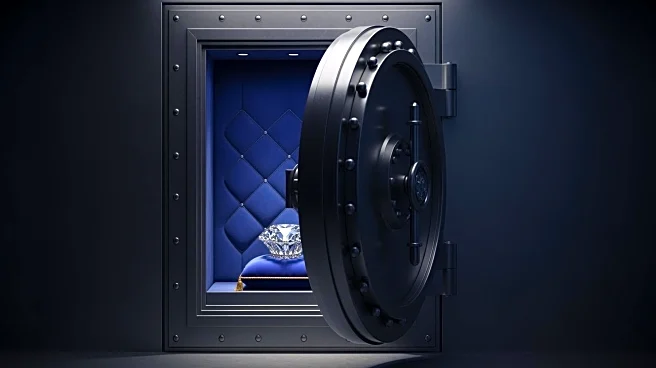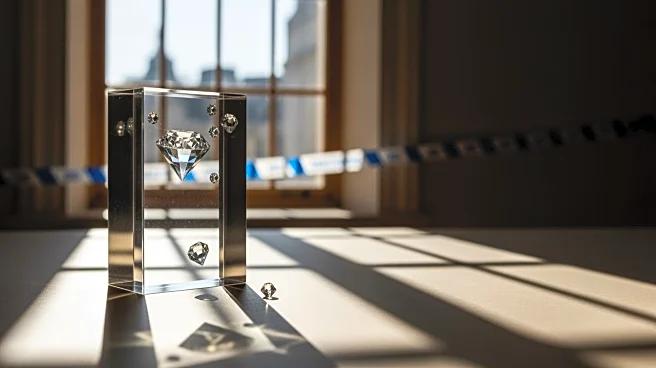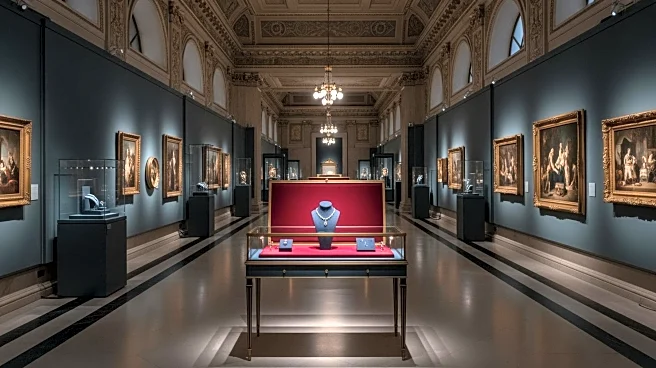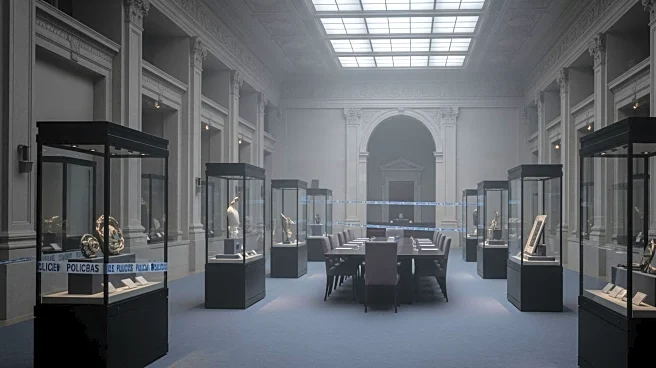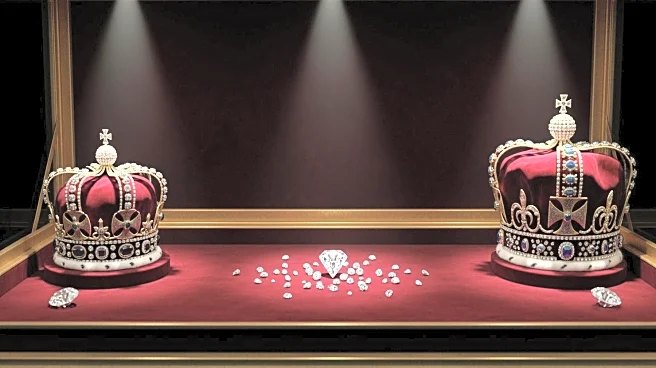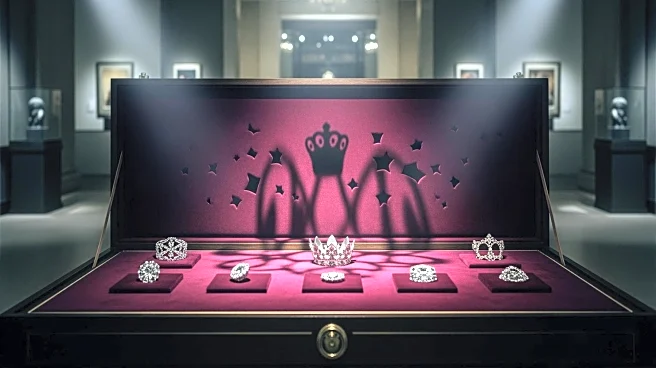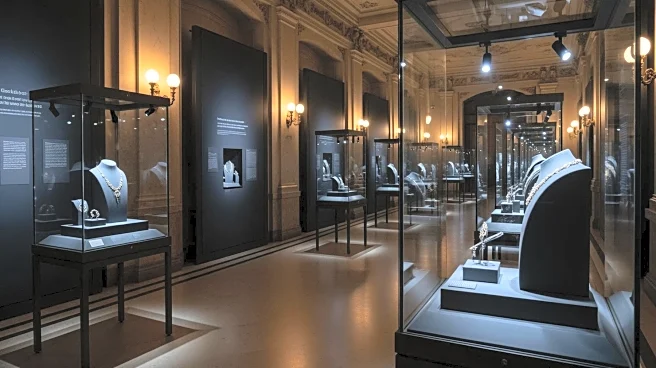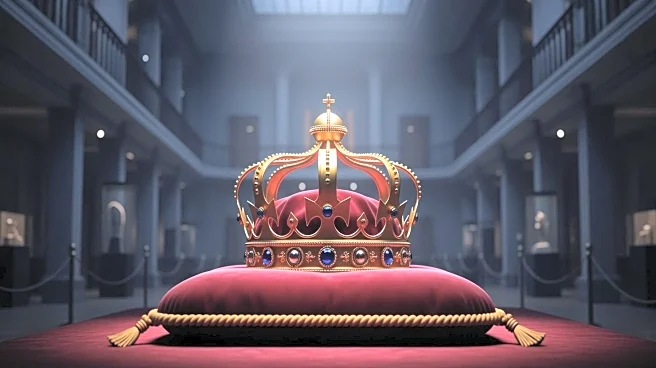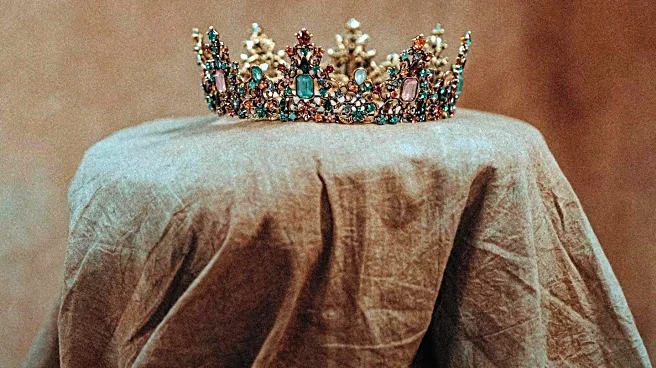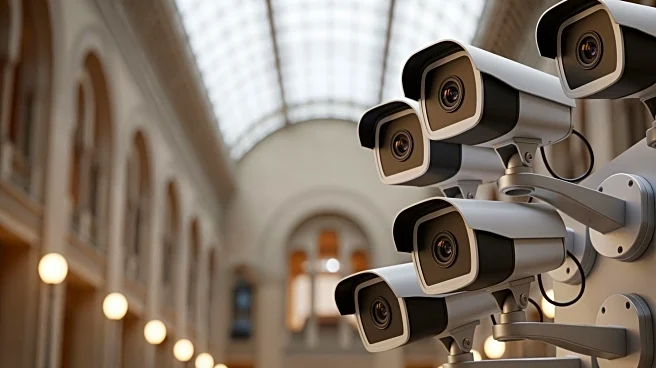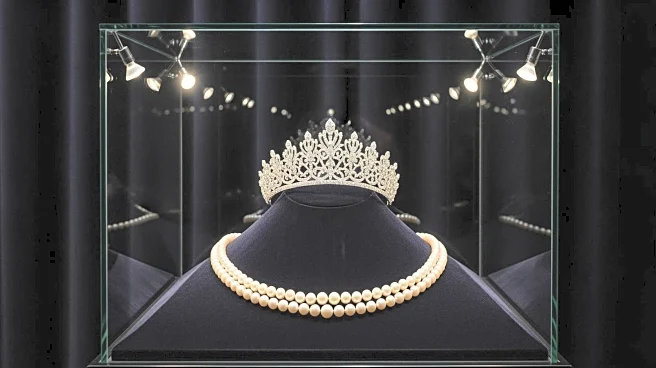What's Happening?
A daring heist at the Louvre Museum in Paris resulted in the theft of several priceless crown jewels. The robbery occurred in broad daylight, with the thieves using a crane lift to access an upper floor window. They targeted the Galerie d'Apollon, which
houses the crown jewels, and made their escape on motorcycles. The stolen items include a tiara with 212 pearls and nearly 2,000 diamonds, a sapphire-and-diamond tiara and necklace set, and an emerald necklace and earrings. The estimated value of the stolen jewels is $102 million. Despite leaving behind significant DNA evidence, experts believe the jewels may never be recovered.
Why It's Important?
The heist has raised serious concerns about the security measures at one of the world's most famous museums. The Louvre's vulnerabilities were highlighted by a recent security audit, which found that 35% of the rooms in the Denon Wing lacked security cameras. The theft is not only a significant cultural loss for France but also a national embarrassment, as it exposes the inadequacies in protecting national treasures. The incident could lead to increased scrutiny and potential reforms in museum security protocols across the globe.
What's Next?
French authorities are actively investigating the heist, with hopes of capturing the thieves. However, the recovery of the jewels remains uncertain. The incident may prompt a reevaluation of security measures at the Louvre and other museums worldwide. There is also a possibility of international cooperation in tracking down the stolen items, given their historical significance and value.
Beyond the Headlines
The heist underscores the ongoing challenges museums face in balancing public access with security. It also raises questions about the black market for stolen art and historical artifacts, where such items can be dismantled and sold for a fraction of their worth. The cultural and historical loss is immeasurable, as these jewels are irreplaceable symbols of France's heritage.
